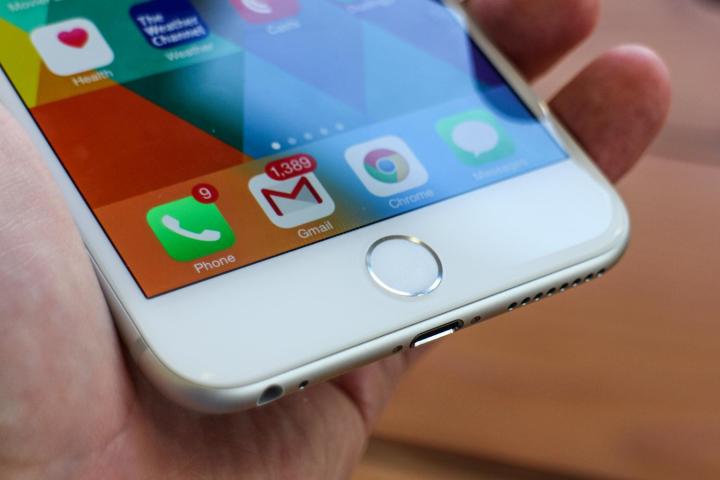Something strange is happening in the world of Apple rumors. Up and down the internet, from the most questionable sources to analysts with impeccable records, people seem to be united in one assertion: That Apple is dead set on reviving tech it has previously ditched.
Whether that means the return of Touch ID on your iPhone or the wholesale abandonment of the Touch Bar on the company’s MacBook line, big changes are apparently coming. What is going on? Is Apple really having a change of heart and becoming less stubborn? Are the reports and rumors mistaken? Or is it something else?
The great technology cull

The main sources of these rumors, at least recently, are industry analyst Ming-Chi Kuo and Bloomberg reporter Mark Gurman. Both have excellent reputations and solid track records when it comes to reporting Apple rumors, so their conclusions should not be simply dismissed out of hand. What are they predicting?
Kuo, for one, says that the next MacBook Pro — due out in mid-2021 — will drop the Touch Bar entirely, replacing it with the traditional row of function keys. He also believes Apple will bring back the much-loved MagSafe charging connector that magnetically connects to the MacBook Pro, preventing it from being accidentally tugged to the floor. Along with that, there will supposedly be a greater variety of ports on the upcoming MacBook Pro.
Gurman tends to agree with the return of MagSafe. At first, he seemed less decisive about the death of the Touch Bar, stating only that Apple has been testing MacBook Pro models that omit the OLED strip, but he has since clarified that the Touch Bar is definitely on the way out.
As for the iPhone, reports have been surfacing for years — from almost the moment Face ID replaced Touch ID, in fact — that Apple has allegedly been working on some sort of under-the-screen touch-based authentication system of the type tried by numerous Android manufacturers. Whether this replaces Face ID or merely complements it is not known, but what we do know is that Apple has at least patented the idea.
Don’t expect wholesale change

What does all this mean? After all, these inventions cost Apple a lot of time and money — the Touch Bar, for instance, required a huge amount of work in both hardware and software to make it a reality. Is the company really going to just drop them all like a bad habit?
Kuo and Gurman are two of the most reliable commentators in the biz. Sure, one of them could be wrong, but for both to arrive at almost the same conclusions and both be wrong seems unlikely. It definitely feels like there is something to these rumors.
Perhaps it signals a change on Apple’s part. The company loves painting itself as an innovator at the forefront of the tech world, and admitting it made a mistake is a hard thing for it to do. In the past few years, there has only really been one major example of this — the failed AirPower charging pad — testifying to both Apple’s ability to read the industry and its reluctance to change course. Could it finally be becoming a bit more humble, ready to accept defeat rather than dig its heels in?
For a company still living in Steve Jobs’ long, obstinate shadow, that is unthinkable.
Maybe, but I think something else is at play here. For one thing, I think it is highly unlikely that every one of these proposed changes happens at once, if at all. Collectively, that would signal to the world that Apple has not just made a single, isolated mistake, but that it fundamentally misjudged the future in numerous ways. For a company still living in Steve Jobs’ long, obstinate shadow, that is unthinkable.
No, here is what I think is more likely: Apple will launch its usual range of MacBook Pro models, alongside a more affordable option sans Touch Bar. This is the approach the company took when the Touch Bar first launched in 2016 and gave users a laptop that still offered the traditional function keys if they needed them. That way, Apple can bow to the pressure without completely caving and throwing away years of work.
At the same time, the MacBook Pro line will still predominantly feature USB-C ports running at Thunderbolt 3 speeds. Kuo has claimed that there will be more port variety and a return to MagSafe — why can’t those two predictions be part of the same whole? Do not expect Apple to suddenly bring back USB-A slots, Ethernet, hell, even FireWire — it has made too much noise about why USB-C is superior.
Interestingly, Gurman has claimed the SD card slot is making a return. Offering a laptop with USB-C, MagSafe, and an SD port would probably count as “variety” in Apple’s book and mean that Kuo is still technically correct. Alongside the SD card prediction, Gurman has said that Apple “will still include multiple USB-C ports on its future Macs,” as well as MagSafe. That may not be as much variety as you were hoping for, but for a company like Apple — one that hates changing course after it has claimed to have seen the future — it might be as much as we get.
Touch ID isn’t coming back

The return of Touch ID, though, is highly unlikely. Like USB-C, Apple has often talked about the superiority of Face ID, but not because it means less fumbling with upside-down cable plugs. No, Face ID is a key part of Apple’s modern identity of rock-solid security, and that is a key selling point for the company. That is something it cannot just walk away from.
When Apple first revealed Face ID with the iPhone X in 2017, it laid out exactly why it was moving beyond Touch ID. The company’s fingerprint-recognition system, Apple said, had about a one-in-50,000 chance of being fooled. Face ID, by contrast, had a one-in-a-million chance. Ditching Face ID and bringing back Touch ID would be like admitting your iPhone was about to get a whole lot more unsafe. How do you think that would play out for Apple’s reputation?
At the same time, adding both Face ID and Touch ID to the iPhone seems unnecessary and unlikely. Why do all that work to resurrect a less secure form of authentication when Face ID works perfectly well? When Apple decides on a new direction, it goes in all guns blazing. Going halfway? That is just not the Apple way.
And that is the problem with a lot of the conclusions being drawn from these reports. Wholesale admission of failure (whether that is explicit or implied through device changes) is not the way Apple does things. Sure, many of these about-face developments may happen, but do not bet the farm on all of them coming to fruition.



